

How To: The Best Investigatory Projects in Science: 16 Fun & Easy Ideas to Kickstart Your Project
Most of us have conducted an investigatory science project without even knowing it, or at least without knowing that's what it was called. Most science experiments performed, from elementary to high school students and all the way up to professional scientists, are investigatory projects.

How To: Find standard deviation
In this video tutorial, viewers learn how to calculate the standard deviation of a data set. The standard deviation of a statistical population, a data set, or a probability distribution is the square root of its variance. To calculate the standard deviation, users will need to follow these steps. 1) Find the mean of the data. 2) Subtract the mean from each data point. 3) Square each of the values you got in step 2. 4) Then find the mean of the values you get from step 3. 5) Finally, square r...

How To: Write an argumentative research essay
Writing a research essay or an argumentative research essay can seem like a major challenge to students. All the work, all the writing all the deadlines! Simplify the entire process by learning how to gather information the correct way, namely using the resources at the school library and, more importantly, how to fill those pages. This video will show the easy way to write argumentative research essays.

How To: Divide small numbers by big numbers
This is a mathematical educational video on how to divide a small number by a larger number. You are aware that it is easy to divide a larger number by a small number. For example, if you want to divide 379 by 9 it is easy to do so. But if you have to divide 9 by 379 it is a bit difficult. You have to add a zero and see if you can divide. You need to add one more zero so that you can divide 900 by 379. But you should know that the answer would start like this 0.0 as we have added 2 zeros alre...

How To: Find the slope of a line given 2 points with fractions
In this video tutorial the instructor shows how to find the slope of a line given two points with fractional values. To do this first name your two points as point 1 with coordinates as x1, y1 and point 2 with coordinates x2, y2. Then substitute the values in the equation of the slope which is slope m = (y2 - y1) / (x2 - x1). Now all you have to do is simply the fraction after substituting the point values. Be careful about the signs while substituting in the formula. Now finally after solvin...

Use the quadratic equation: finding the mirror point
In this video the tutor shows how to find the mirror point using a quadratic equation. He says that to graph a parabola you need to find the mirror point symmetrical to the Y-intercept. Now he explains how to find a mirror point using an example with sample values. He begins with saying that the Y-coordinate of the mirror point is same as the Y-coordinate of the Y-intercept. Now you have to find the x coordinate of the mirror point which he shows that it is double the x-coordinate of the vert...
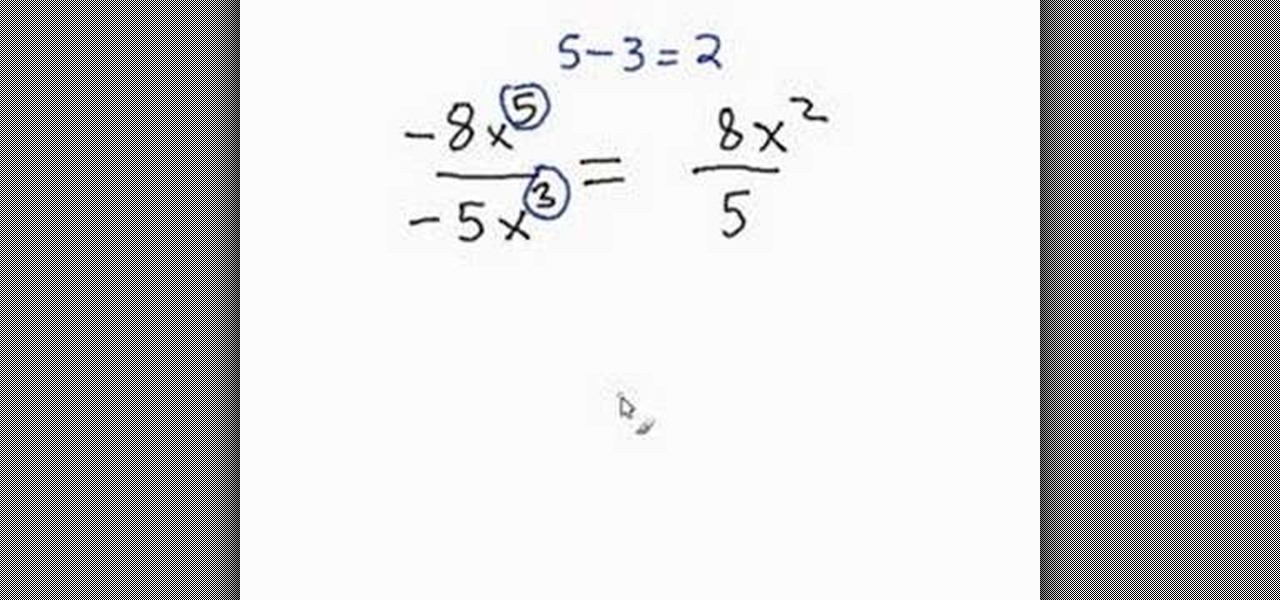
How To: Divide variables
This is a helpful video provided by Math Problem Generator. It deals with the complex challenges of dividing variables. The audio is great and provides specific examples of dealing with multiple types of this problem. The video lays out three simple steps. The first being to simplify the coefficient, the second being to divide the variable, and the third being to deal with the results of the division. The information is clearly presented and best of all it's free. I think we all wish there we...

How To: Make This Amazing 9-Layer Density Tower from Things Found in Your Kitchen
Ralph Waldo Emerson once observed that "the seed of science" was "wonder," and taking a look at this nine-layer liquid tower from Steve Spangler's Sick Science! channel, one can't help but do just that — wonder. How is this possible? Is this magic or what?
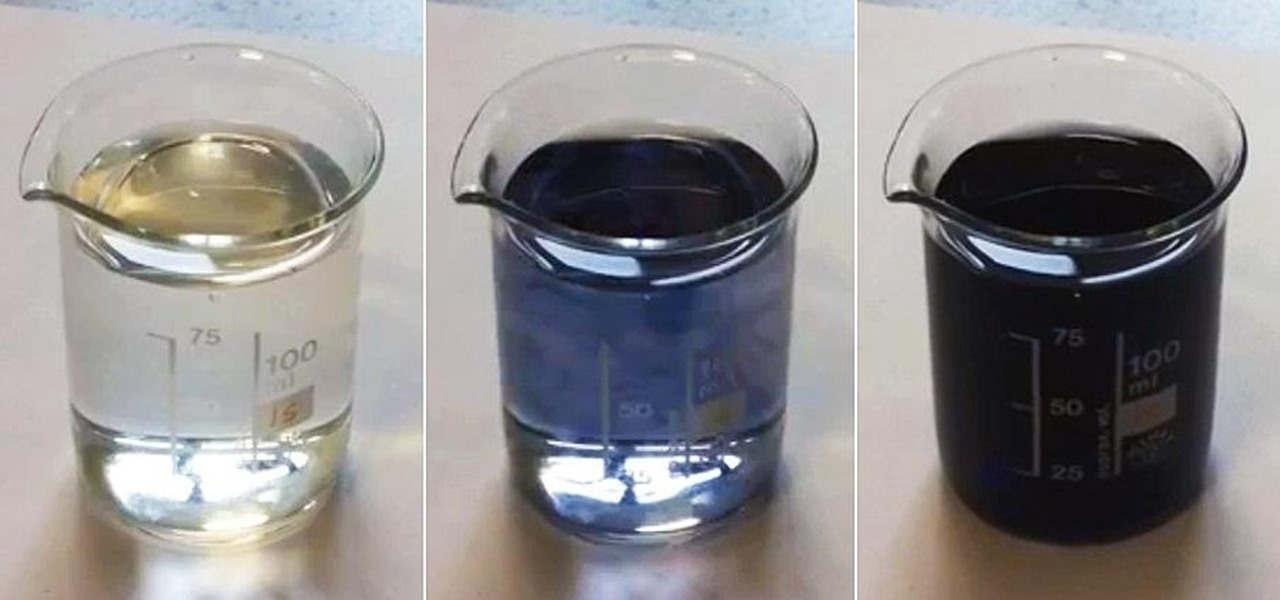
Classic Chemistry: Colorize Colorless Liquids with "Black" Magic, AKA the Iodine Clock Reaction
Want to make boring old colorless water brighten up on command? Well, you can control the color of water with this little magic trick. Actually, it's not really magic, but a classic science experiment known commonly as the iodine clock reaction, which uses the reactions between water and chemicals to instantly colorize water, seemingly by command. You can use different colorless chemicals to produce different colors, and you can even make the color vanish to make the water clear again.

How To: Use ">" (greater than) and "<" (less than) symbols
In this video the author explains how to identify the less than (<) and greater than (>) symbols and when to use them. She explains to us to relate the numbers to animals stating that the smaller numbers are smaller animals and bigger numbers are bigger animals. Now she tells us to imagine that smaller animals are eaten up by the larger animals. So she shows a smaller number comes on the left side of '<' sign and bigger number comes on the right side of '<' sign stating that the bigger number...
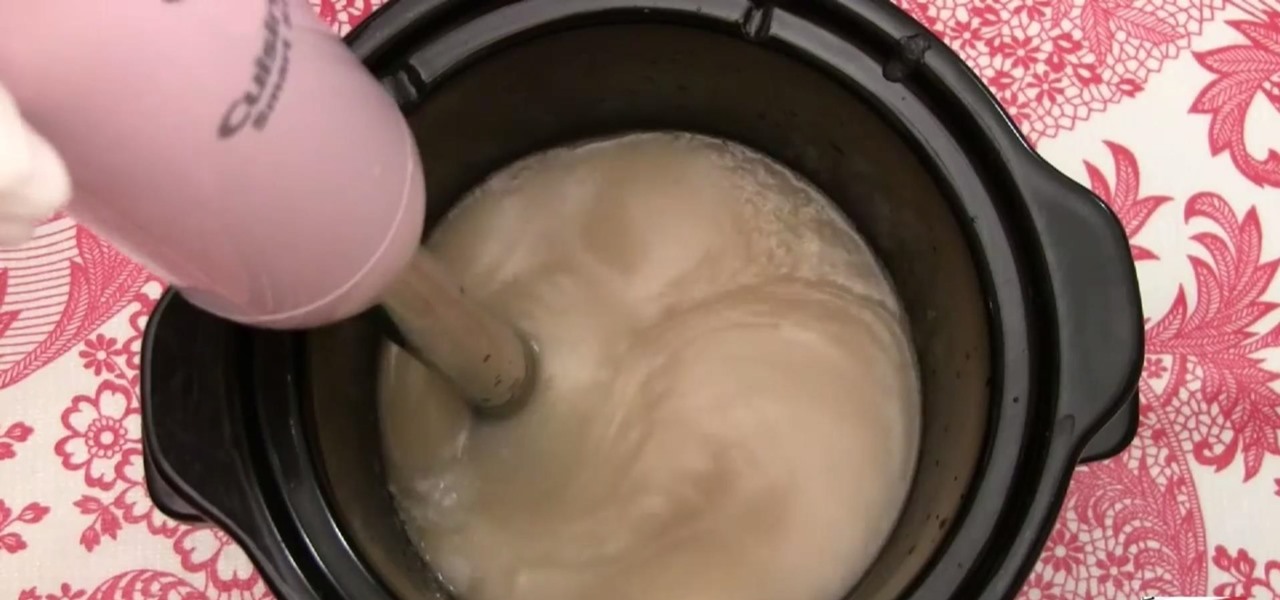
How To: Make Soap Out of Guava Leaf Extract for a Science Investigatory Project
Unless you're a high-schooler building a nuclear fusion reactor, the hardest part of a science investigatory project often is coming up with a good idea. You want it to be cool yet feasible, novel but still useful.
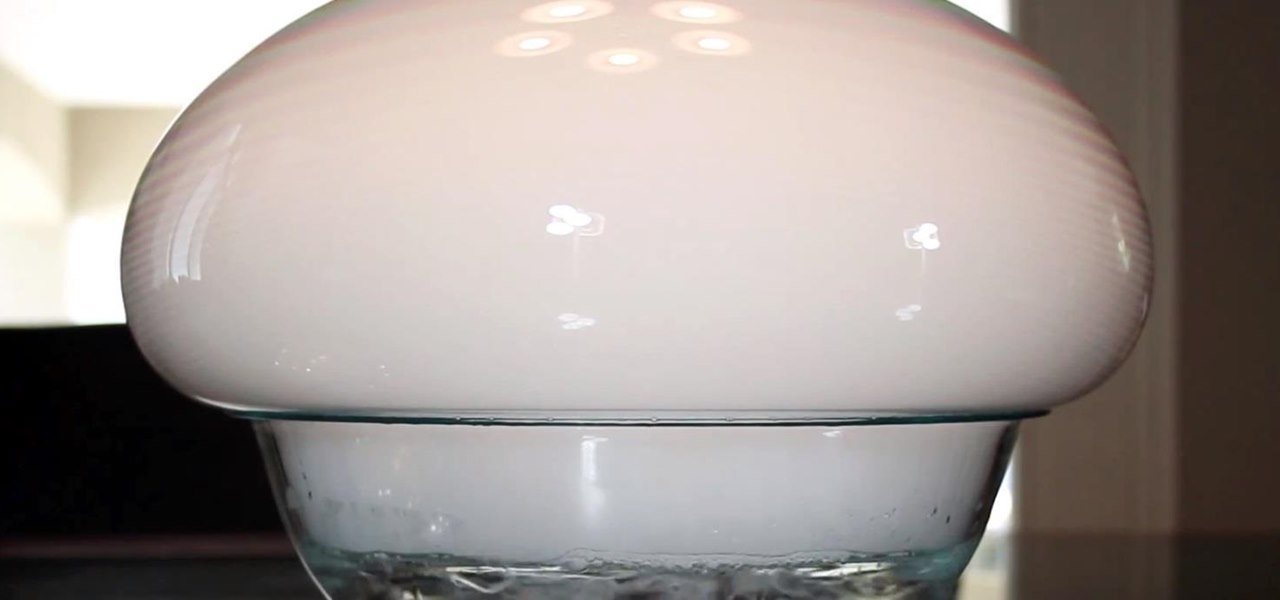
How To: Make a Monster Dry Ice Bubble
Sure it's been done before, but it never gets old. There's something magical about dry ice, bubbles, and especially the result you see when they're combined!

How To: Make a Crazy Foam Explosion Science Experiment
Check out this video to see our Fantastic Foamy Fountain in action. The experiment uses Hydrogen peroxide and dry yeast. Hydrogen peroxide is similar to water but has an extra oxygen atom. This makes it more dangerous, and only adults should handle the hydrogen peroxide.

How To: Balance a chemical equation with ease
Learn how to balance the three different types of chemical equations in simple steps. First take an equation, write down its reactants and products and write down the names of all elements. Now write down how many of each element are present in the equation. Now check which element does not match, in this case the Oxygen doesn't match. Now multiply the element or compound starting at two but now hydrogen doesn't match. Try to match them by multiplying the coefficients but now sulfur doesn't m...

How To: Build a Simple Paper Bridge as a Science Experiment
Every day we pass bridges, whether it's a foot bridge, a highway overpass, a span over water, or a viaduct over a valley. We pass on these structures without even thinking of the engineering genius that went into their design and construction, let alone the science behind their strength.
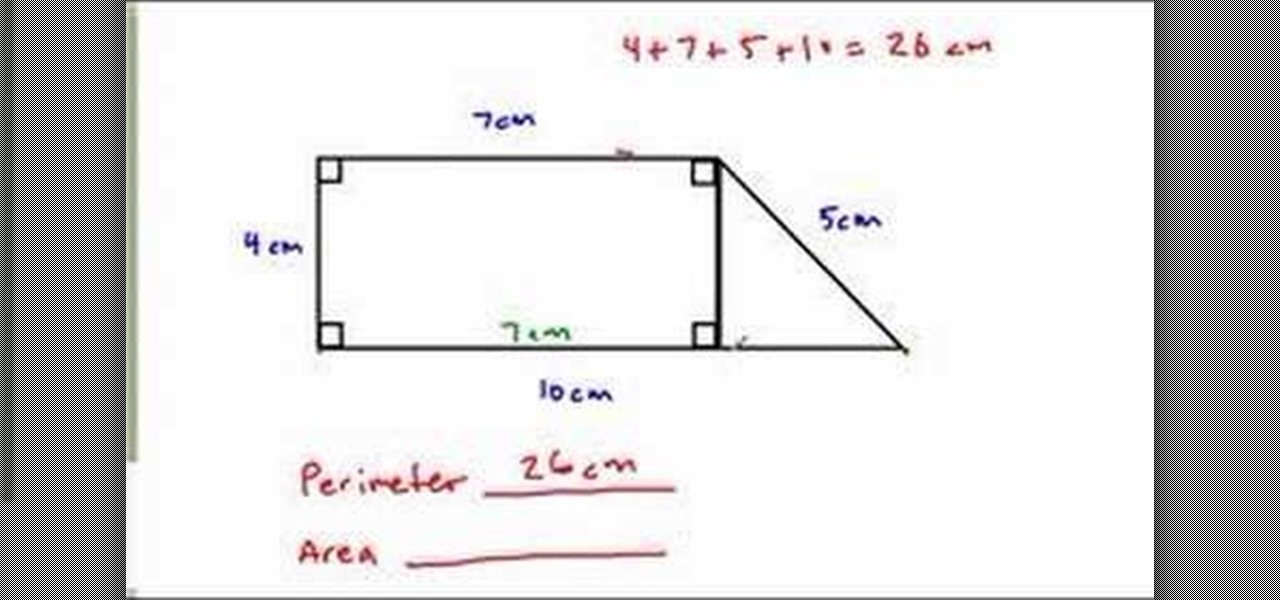
How To: Find the perimeter & area of a complex figure
In this video tutorial the author shows how to find the perimeter and area of a complex figure. He shows that a complex figure can be subdivided into standard geometric figures. In the current example he divides the complex figure into a rectangle and a triangle. Now he computes the perimeter by adding the three sides of the rectangle and the two sides of the triangle. Similarly he computes the individual areas of the rectangle and the triangle and finally adds then up to find the area of the...
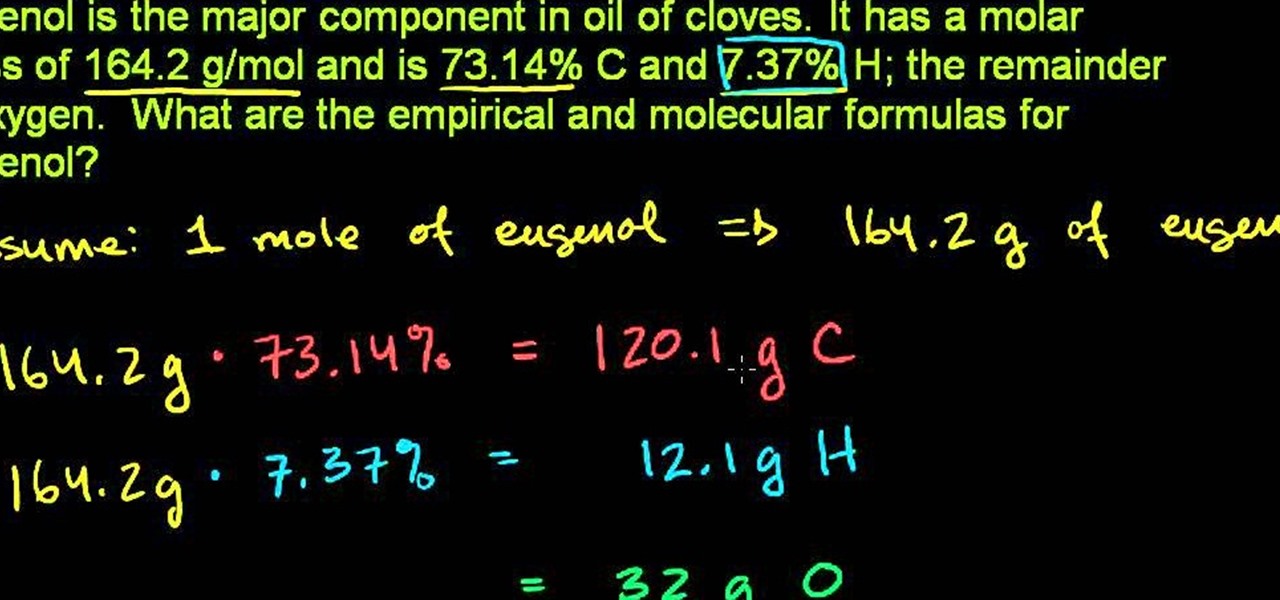
How To: Determine the empirical and molecular formulas for a compound in chemistry
In this free video science lesson from Internet pedagogical superstar Salman Khan, you'll learn how to determine the empircal and molecular formulas of a substance given percent composition. Whether you need help studying for that next big test or could just use a hand finishing your homework, you're sure to be well served by this video lesson. For more information, including detailed, step-by-step instructions, take a look.
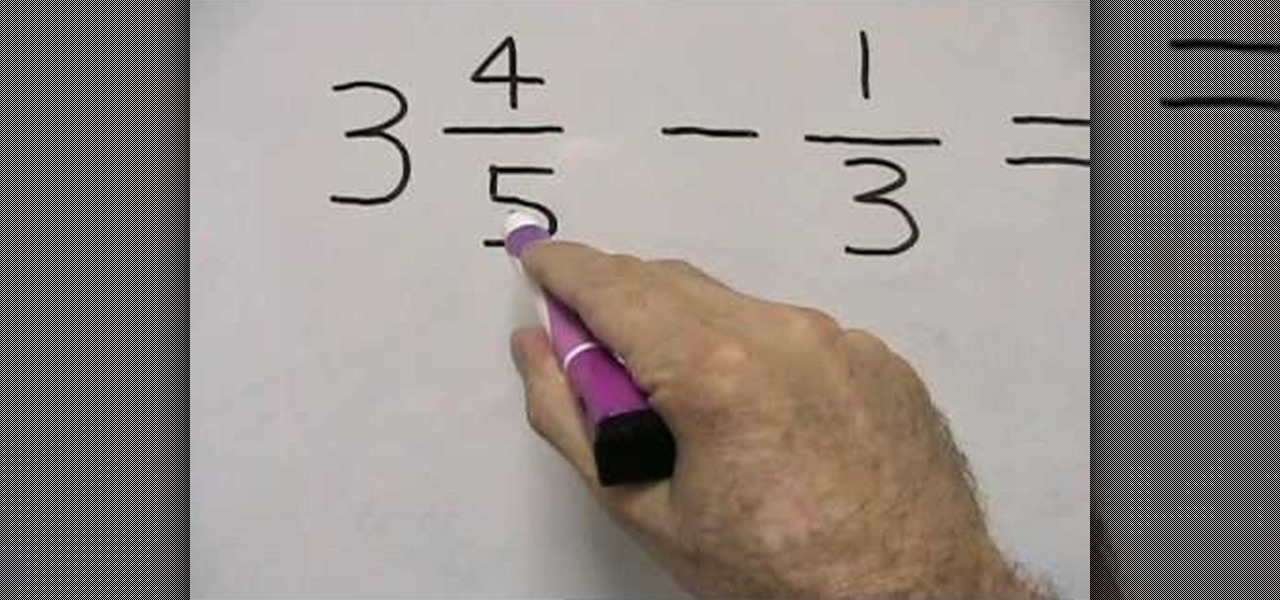
How To: Subtract a mixed number from a proper fraction in basic math
From Ramanujan to calculus co-creator Gottfried Leibniz, many of the world's best and brightest mathematical minds have belonged to autodidacts. And, thanks to the Internet, it's easier than ever to follow in their footsteps. With this free math tutorial, you'll learn how to subtract a mixed number from a fraction in basic arithmetic.

How To: Do the Weissenberg effect science experiment
When a rod mounted in a hand drill is dipped into a liquid and rotated, for certain non-Newtonian fluids the liquid will climb the rod - sometimes to quite spectacular heights.

How To: Weather Forecast And Weather Predict Without Technology
We have no control on the weather yet it is a part of our lives which influence what we do, what we eat, what we wear and many times where we live. How did people predict the weather before there was the Internet, television, radio or the weatherperson with all of their gadgets?
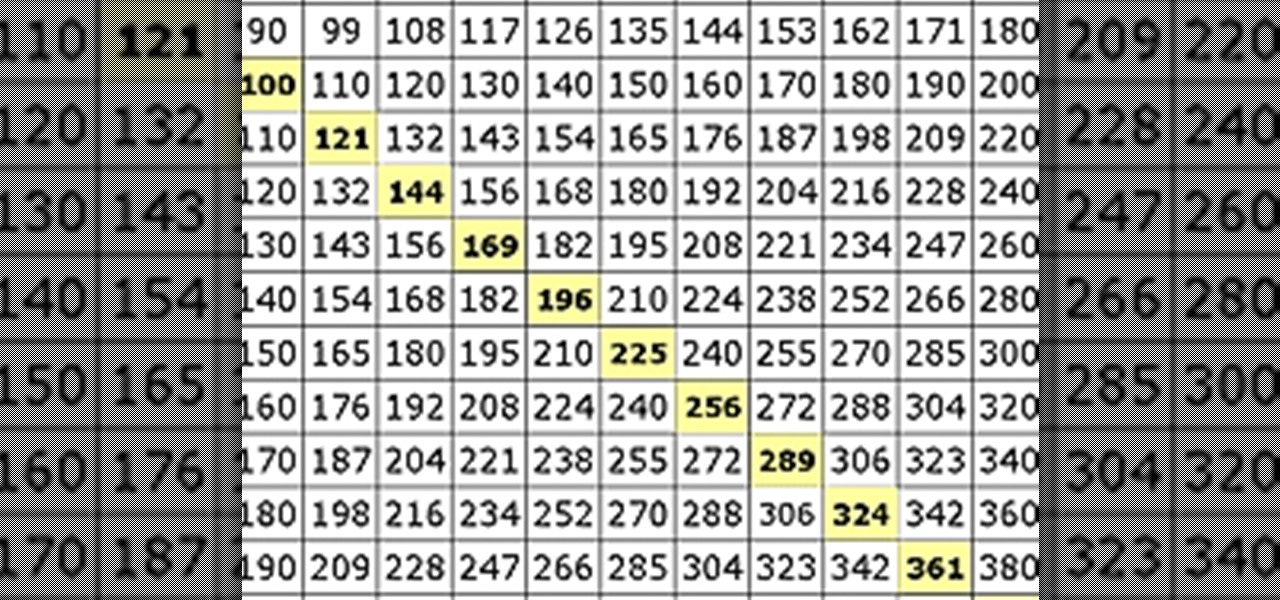
How To: Multiply & Divide Numbers (Basic Elementary Math)
Adding and subtracting may be the easiest of mathematical operations, but once you get it down, multiplication and division can be just as easy. That's why it's called elementary arithmetic. If it were harder, it would be called college algebra or trigonometry. But it's not— it's basic math, and once you get your head around the numbers, you'll never hate math class again! (Okay, maybe you will.)

How To: Extract DNA from a Strawberry with Basic Kitchen Items
We all know that DNA is pretty amazing, but it's not something that most of us get much hands-on experience with. Even though it's in every living thing around us, we never see it, so we rarely think about it either.
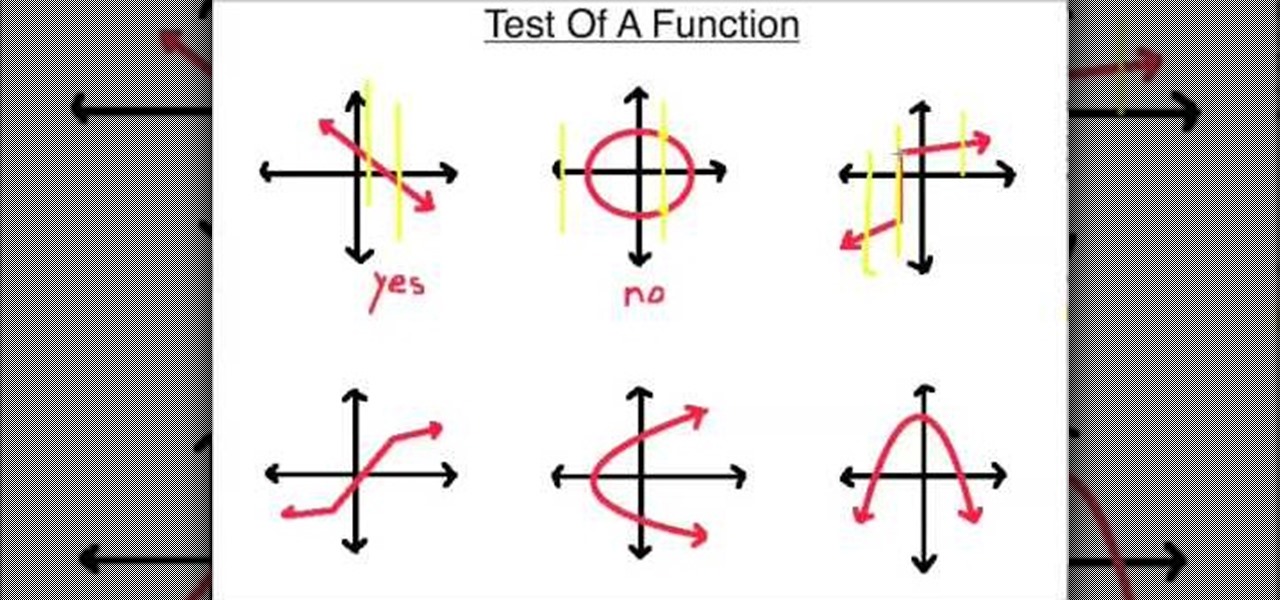
How To: Determine if you have a function
In this tutorial, we learn how to determine if you have a function. You will start off with two functions and their points. The 'x' values make up the domain of the function and the 'y' values make up the range. The input values are the domain and the output are the range. If you're checking to see if you have a function, you will need one 'y' for every 'x'. This means that each value has another one that goes with it. Each of the points need to have one partner with them, no more and no less...
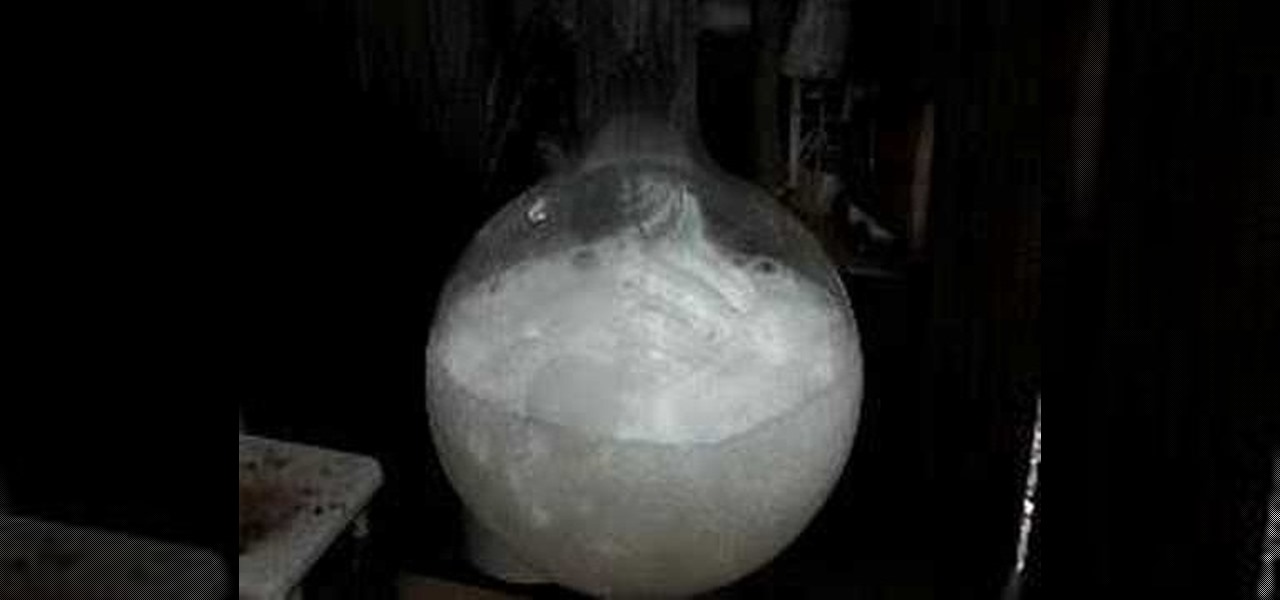
How To: Make hydrochloric acid from salt
In this tutorial, we learn how to make hydrochloric acid from salt. First, you will pour some salt into a distil flask. After this, you will add in some concentrated sulfuric acid to the salt. Next, you will let these react with each other. You will start to see gasses bubble up and the excess hydrogen chloride gas come out through the top of the tube. To create a stronger reaction, you can add heat underneath the reaction. Then, test this by exposing it to ammonium chloride. If it's the righ...

How To: Change Fahrenheit to Celsius
This video is a tutorial on how to convert Celsius to Fahrenheit. The title of the film says it will teach you how to convert Fahrenheit to Celsius, but it does not. It does just the opposite. The video begins by comparing Fahrenheit and Celsius. He points out that Fahrenheit measures water to freeze at 32 and water to boil at 212. Celsius measures water to freeze at 0 and water to boil at 100. To convert Celsius to Fahrenheit, multiply the Celsius temperature by 1.8 and add 32. Many countrie...
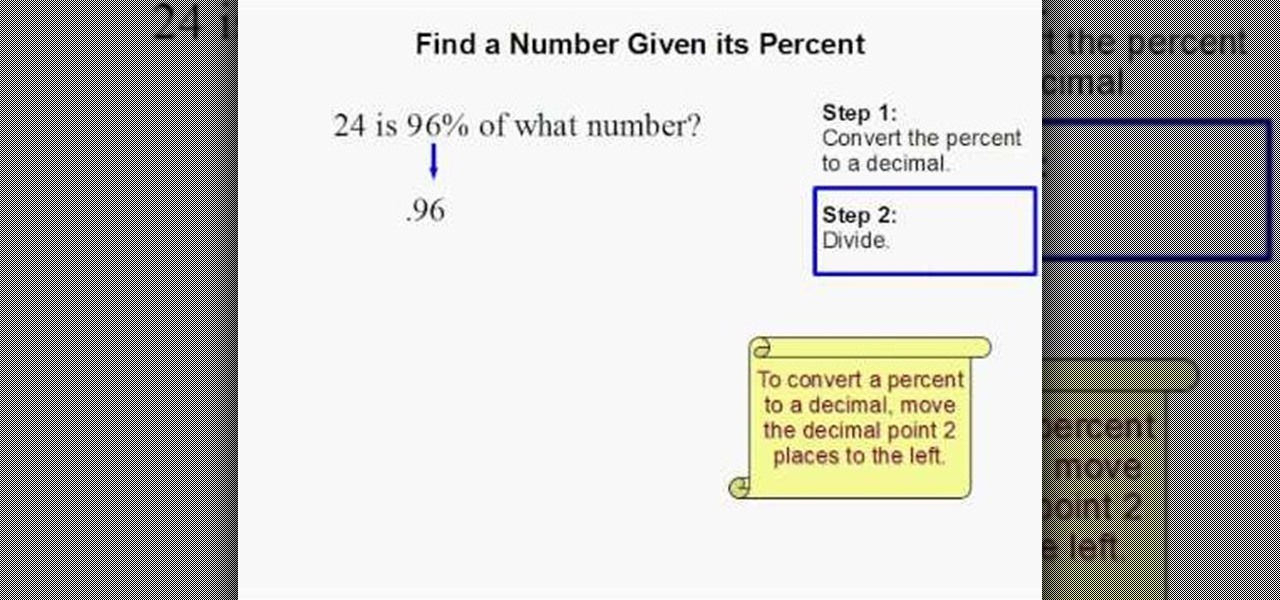
How To: Find a number given Its percent
This how-to video is about how to find a number when its percent is given. This video is really helpful and effective in finding the number when the percent is given, the following steps are explained in the video to find the number when its percent is given:

News: What Happens When You Mix Coca Cola and Milk
Interesting reaction coke and milk The reaction of phosphoric acid (V) to proteins in the milk - they are cut and causes a precipitate
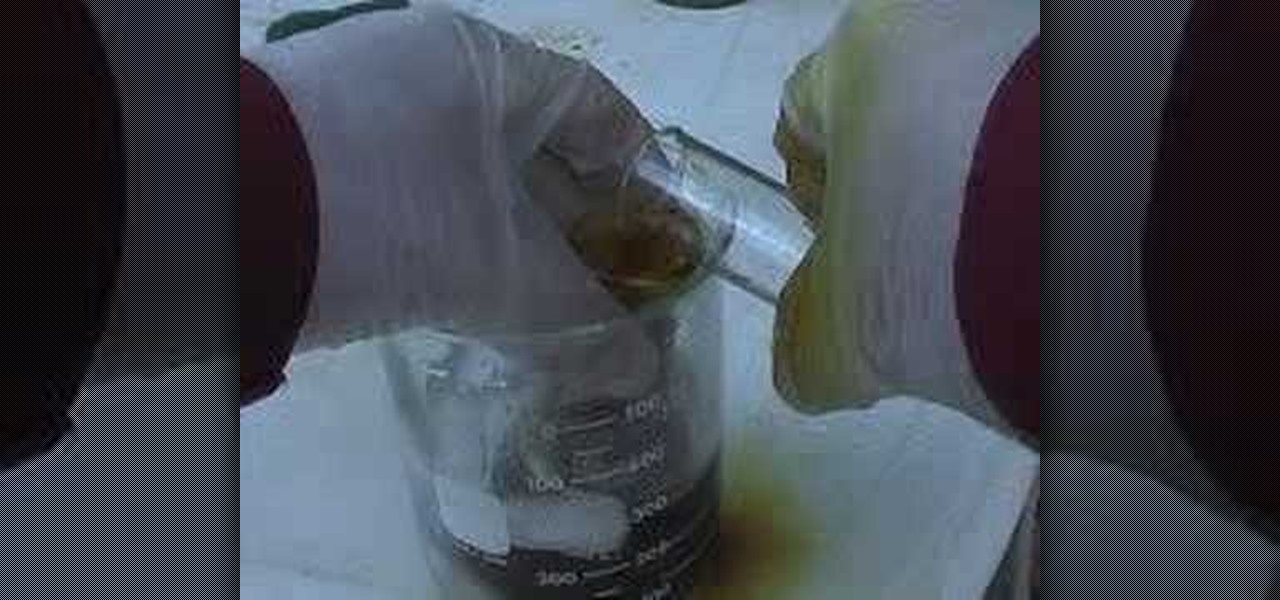
How To: Make iodine easily
In this video, we learn how to make iodine easily. You will need potassium iodine and sulfuric acid to make this. First, add the acid into the potassium iodine slowly. After you add in each part, swirl the beaker slowly so it gets mixed together. After you have added in all of the potassium, you will place this into a beaker filled with ice water while you add in more, because the mixture gets really hot. When finished, you will end up with a mixture that is iodine and nothing else. Fill with...
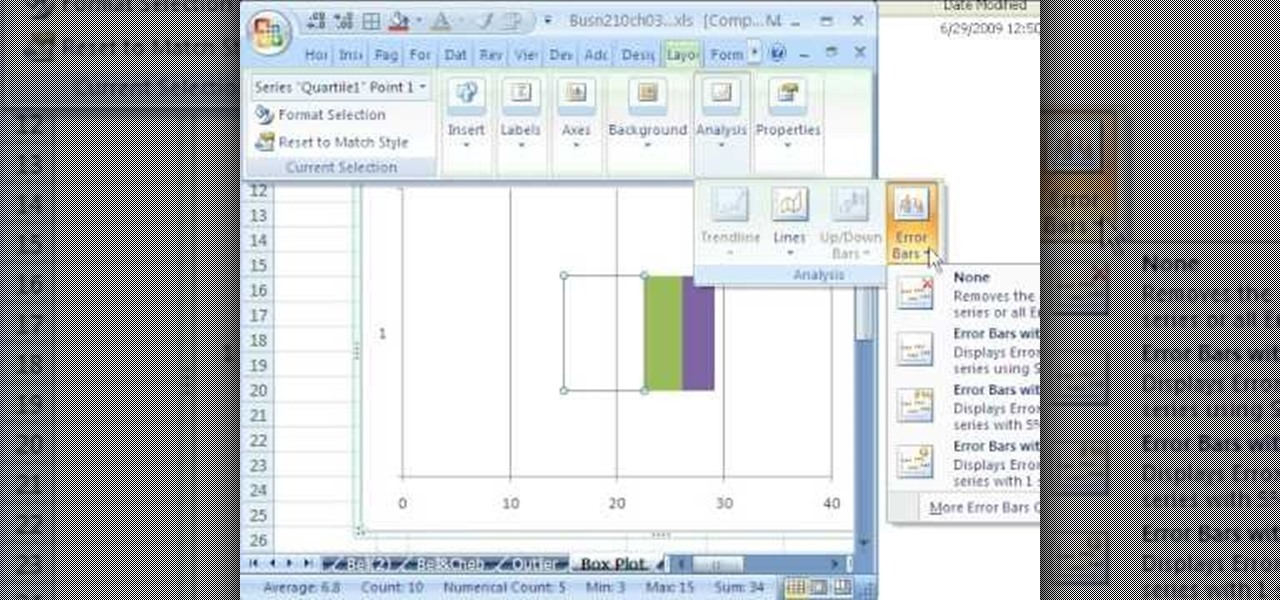
How To: Find outliers using the Z-score method
If you use Microsoft Excel on a regular basis, odds are you work with numbers. Put those numbers to work. Statistical analysis allows you to find patterns, trends and probabilities within your data. In this MS Excel tutorial from everyone's favorite Excel guru, YouTube's ExcelsFun, the 49th installment in his "Excel Statistics" series of free video lessons, you'll learn how to find outliers with the +/- 3 Z-score rule and the ABS function. See how to do a box plot by hand and in Excel. For th...
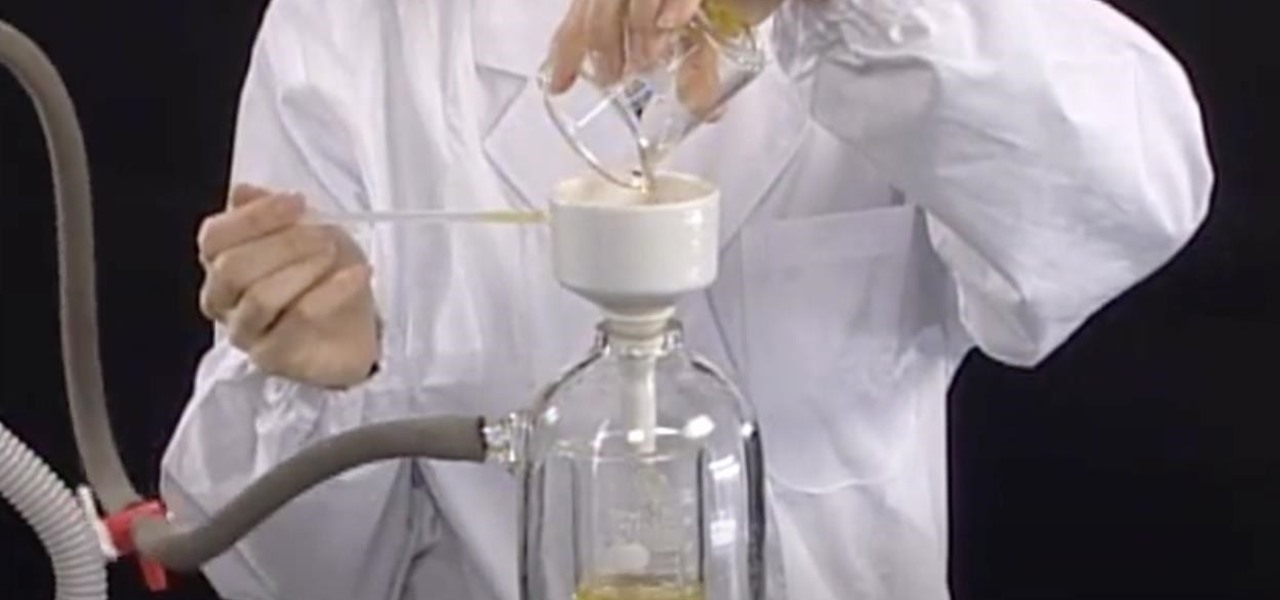
How To: Do Hot Filtration & Recrystallization in the Chem Lab
Find out how everything in a chemistry lab works, from pipettes to burners to recrystallization to storage. You'll get precise instructions on how to work and perform certain scientific duties in the chem lab, whether it's chemical or just ordinary high school science.

How To: Understand how sodium nitrate burns
Ever wondered how science could turn out to be fun? Here's how: take a piece of paper with a mixture of sodium nitrate and sugar. When heated, sodium nitrate releases oxygen and burns sugar. Sugar alone cannot burn fast. If you want faster results, then take sodium nitrate with sulphur and some reactive metals. Add some coal to it for a faster result. This will help you burn some useless pile in quick time.

How To: Test paint for the presence toxic lead
In this tutorial, we learn how to test paint for the presence toxic lead. You will first need to make up two solutions. One will need sodium sulfide and water mixed together in a small container. Then, add acidic acid and water into another container. Drop small amounts of the mixtures into containers, then add in the paint to the containers. Watch and see how the reaction of the paint is with the mixture. If you start to see a black reaction occur in the container, you will know that your pa...
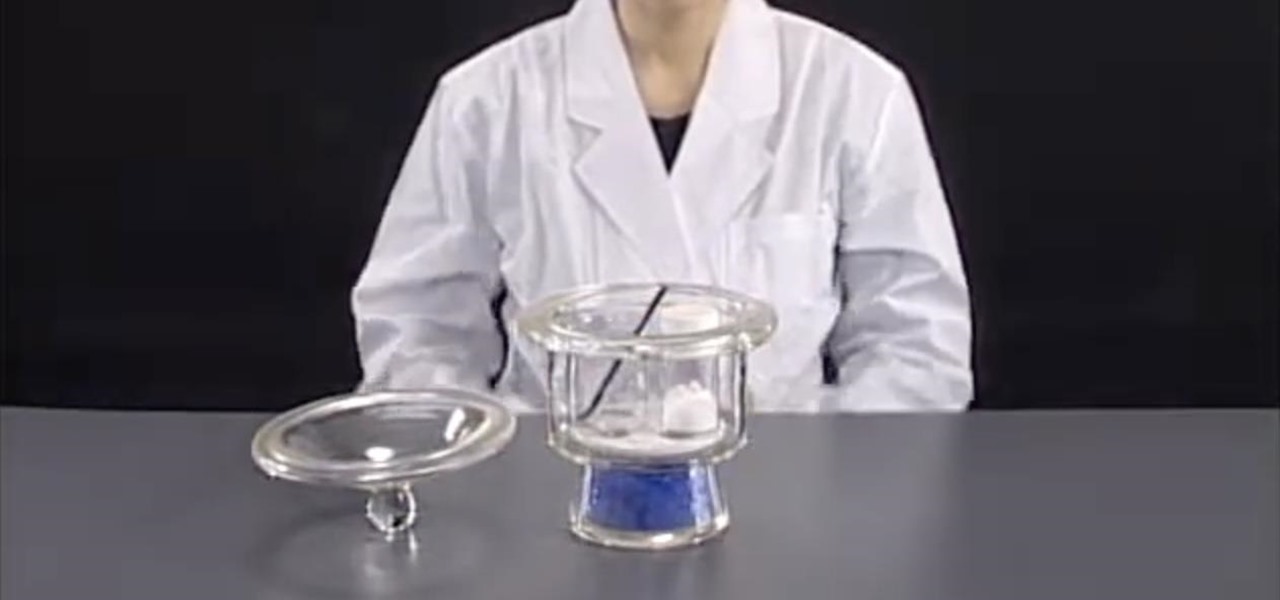
How To: Use a Desiccator in the Chemistry Lab
For your chemistry experiments, you'll eventually need to know how to use a desiccator. Well, this science tutorial, interactive animation will show you how to use a desiccator in the chemistry lab.
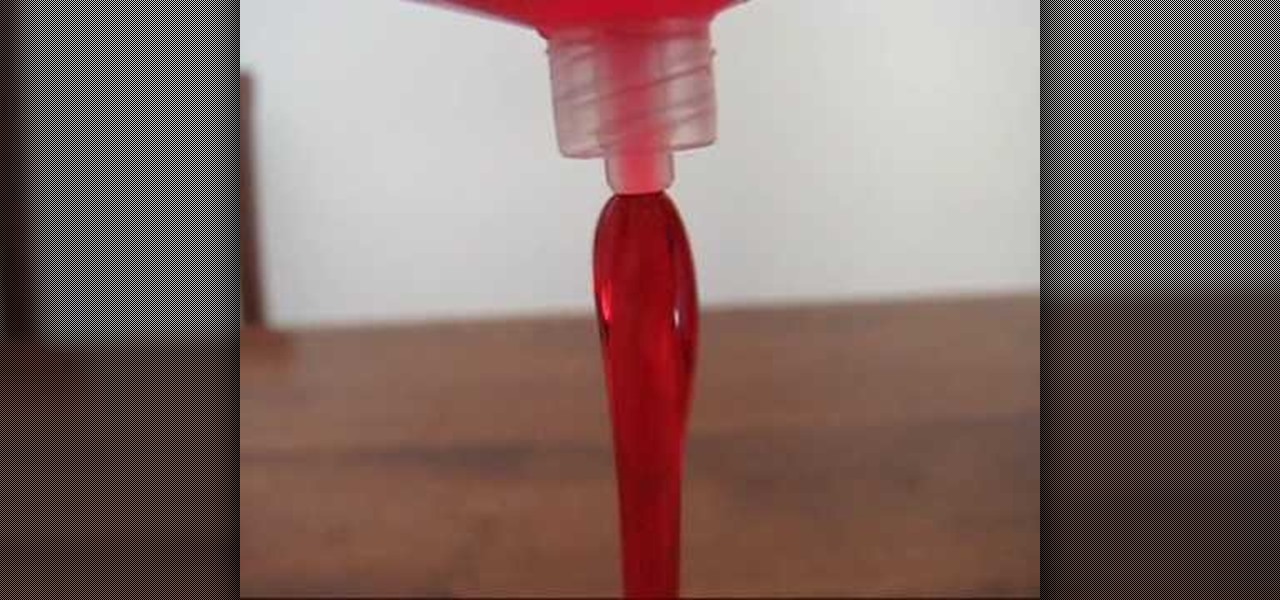
How To: Perform the Barus effect
Watch this instructional science video to observe the Barus effect in action. A dyed solution of POLYOX (polyethylene oxide - it is the stuff used as the lubricant on the strip found in all modern razors) is extruded from a 50 mL syringe. On exit, a marked swelling in the liquid stream several times the diameter of the orifice is observed. The effect is referred to as the Barus Effect, but it also goes by several other names including the Merrington Effect, Die Swell, and Extrudate Swell.
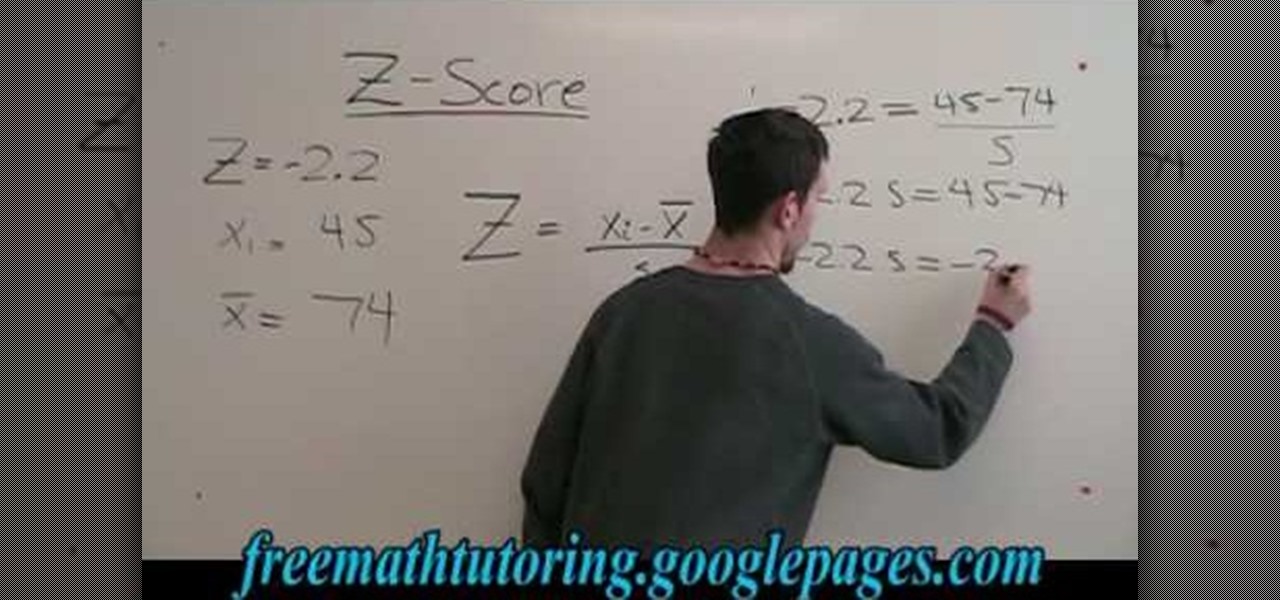
How To: Find the standard deviation with the Z-Score formula
In this tutorial, we learn how to find the standard deviation with the Z-Score formula. First, take your problem and write it out one by one underneath each other. Then, you will need to substitute the numbers in for the variables that are in the problem. Once you do this, you will follow the basic rules of math to find out what the answer to the problem is appropriately. Once you have done this, finish off the problem to find the answer, then you will have found the standard deviation using ...

How To: Write A Letter From Teachers To Parents
Parental involvement is a crucial ingredient in the success of many children. Teachers know the saying all too well that it takes more than a village to raise a child, for one - it takes parental involvement. Thus, it is important for teachers to reach out to parents in that first week of school. Teachers should write a formal letter that is welcoming and easily comprehensible to the parent and the student. This letter should be able to communicate that the teacher values the child’s educatio...
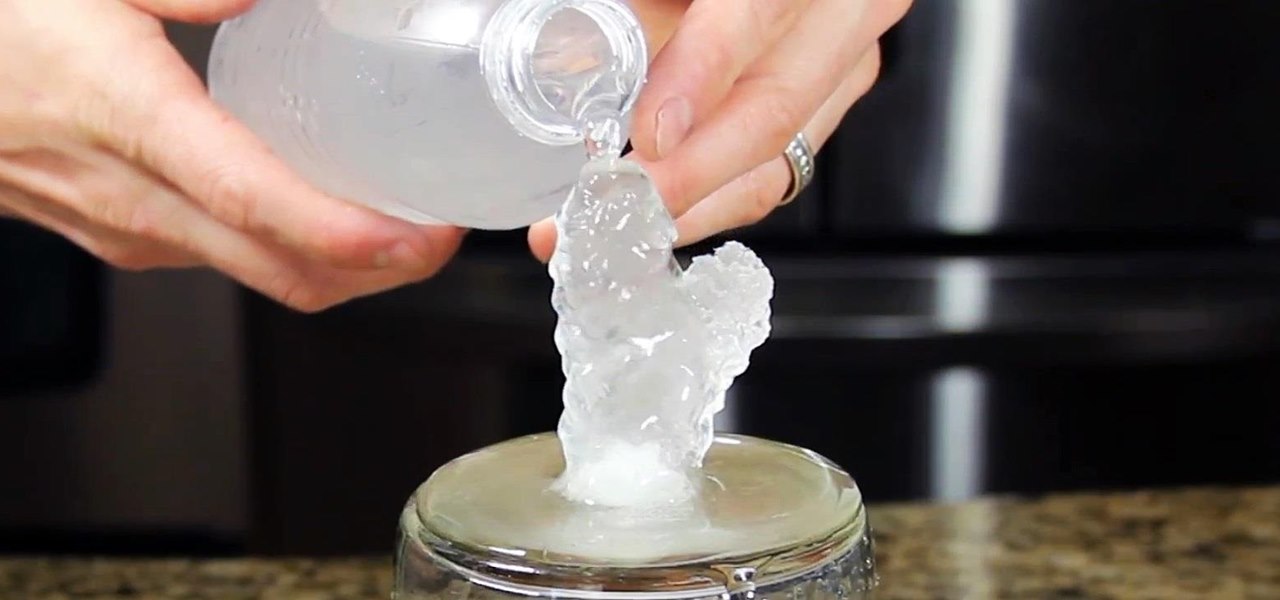
How To: Make Water Freeze into Ice Instantaneously
Have you ever seen water freeze instantly? This "Quick Clip" shows some of my personal experiences with making instant ice using a bottle of water supercooled in a freezer.
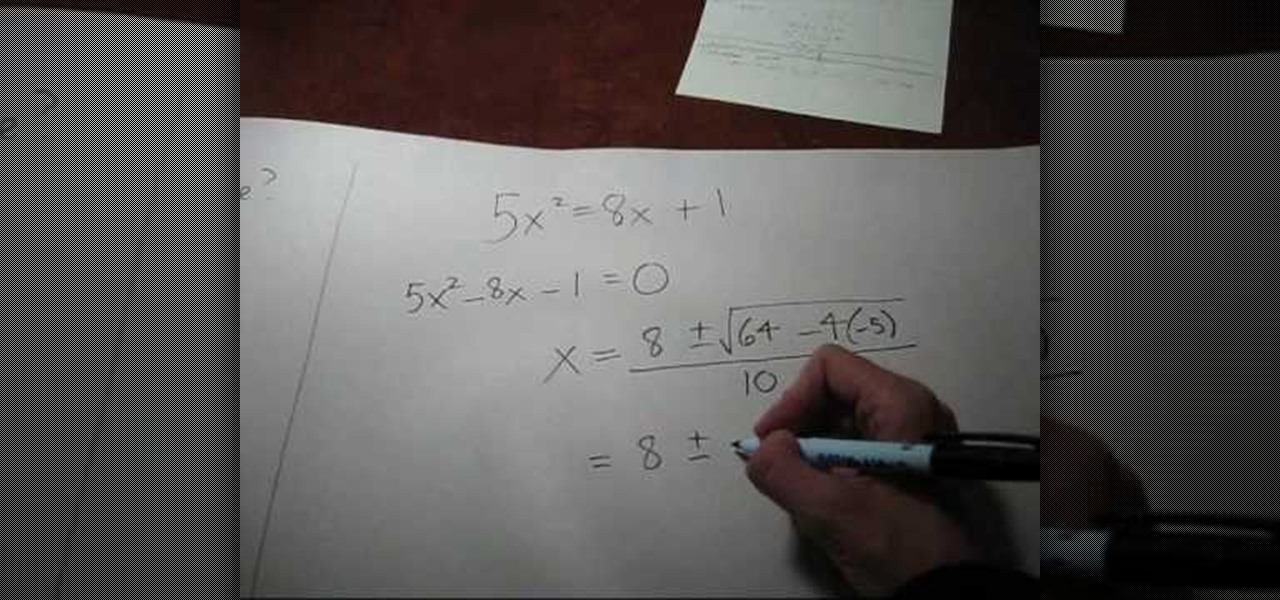
How To: Simplify a quadratic formula result
In this video the tutor shows how to simplify a quadratic formula result. You can solve a quadratic equation using the quadratic formula. The first thing you have to do when given the quadratic equation is bring all the terms to one side so that you have a zero on the other side of the equals to sign. Now the formula to calculate the roots of the quadratic equation ax*x + bx + c = 0 is x = (-b + root of(b*b - 4*a*c) ) / 2 * a. The other root can be obtained by using the minus sign before the ...

How To: Make a chemiluminescent reaction with home chemicals
Watch this science video tutorial from Nurd Rage on how to make a chemiluminescent reaction with home chemicals. Make a chemiluminescent singlet oxygen red light pulse from two simple chemicals almost anyone can buy: pool chlorine and hydrogen peroxide.
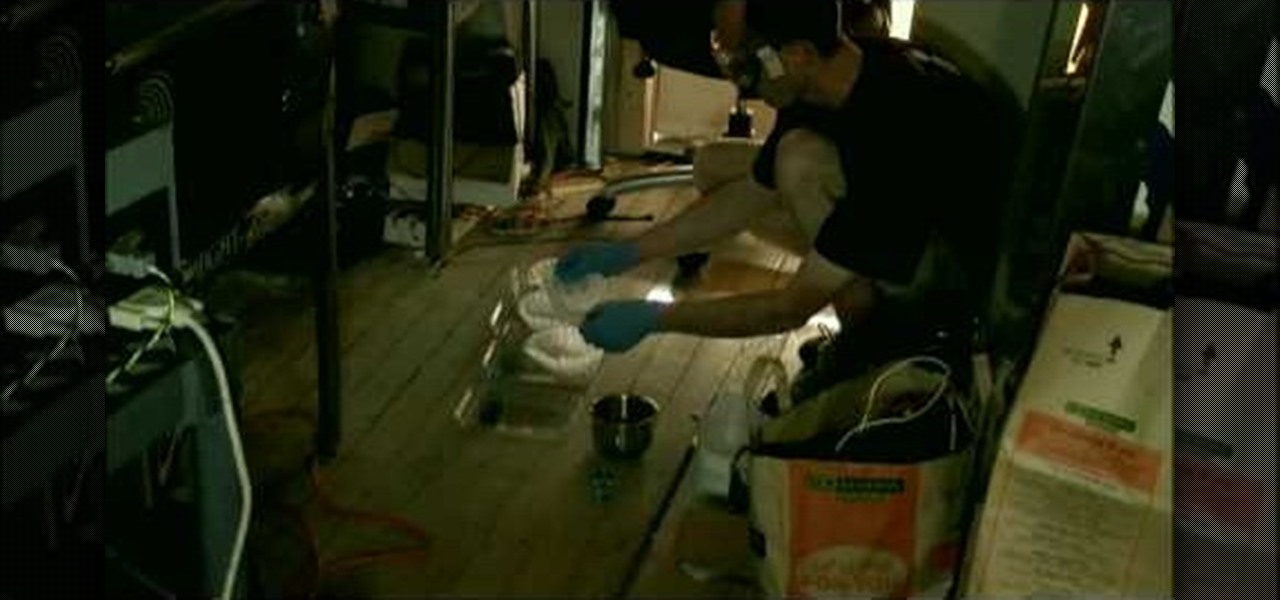
How To: Make DIY Nitrogen Triiodide from ammonia & water purification iodine crystals
Nitrogen Triiodide is a very powerful contact explosive, but like most fun chemicals is not readily available to the general public cheaply. If you want some and have some chemistry skills, watch this video to learn how to make Nitrogen Triiodide at home out of household ammonia and water purification iodine crystals.







